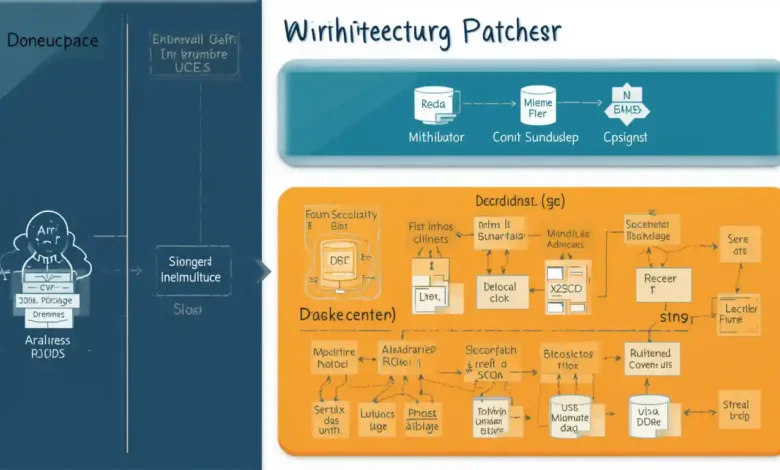Unlocking the Foundation:The Structure of DBMS

Introduction:
In the digital era, where data reigns supreme, Database Management Systems (DBMS) serve as the backbone of countless applications, from small-scale projects to enterprise-level systems. Understanding the structure of DBMS is crucial for developers, database administrators, and anyone navigating the realm of data management. Let’s embark on a journey to unravel the layers of DBMS architecture, shedding light on its core components and functionalities.
Overview of DBMS:
At its essence, a DBMS is a software system that facilitates the creation, management, and utilization of databases. It acts as an intermediary between users and the database, providing an interface for interaction while managing the underlying data structures and operations.
Physical Storage Layer:
The foundation of any DBMS lies in its physical storage layer, where data is stored on disk or in memory. This layer manages the allocation of storage space, data organization, and retrieval mechanisms, ensuring optimal performance and data integrity.
Data Models:
Central to the structure of DBMS are data models, which define the logical structure of the database and how data is organized and represented. Common data models include the relational model, hierarchical model, network model, and object-oriented model, each suited for different types of applications and data scenarios.
Schema and Metadata:
The schema defines the structure of the database, including tables, fields, and relationships, while metadata provides additional information about the data, such as data types, constraints, and indexes. Together, they form the blueprint for the database, guiding its design and usage.
Query Processing and Optimization:
DBMS employs query processing and optimization techniques to efficiently retrieve data based on user requests. This involves parsing and analyzing queries, determining the most efficient execution plan, and accessing data using indexing and caching mechanisms.
Transaction Management:
In multi-user environments, transaction management is crucial for ensuring data consistency and integrity. DBMS utilizes transaction processing techniques such as ACID (Atomicity, Consistency, Isolation, Durability) properties to maintain the reliability of database operations.
Concurrency Control:
Concurrency control mechanisms prevent data anomalies that may arise from simultaneous access and modification by multiple users. Techniques such as locking, timestamping, and optimistic concurrency control are employed to coordinate access to shared data resources.
Security and Authorization:
Security features are integral to the structure of DBMS, safeguarding sensitive data from unauthorized access and ensuring compliance with privacy regulations. Access control mechanisms, encryption, and auditing functionalities are implemented to mitigate security risks.
Backup and Recovery:
DBMS includes backup and recovery mechanisms to protect against data loss due to system failures, human errors, or disasters. Regular backups, transaction logging, and recovery procedures are employed to restore the database to a consistent state in case of failures.
Scalability and Performance:
Scalability and performance are paramount considerations in DBMS design, especially in environments with growing data volumes and user loads. Techniques such as sharding, replication, and caching are employed to enhance scalability and optimize performance.
Conclusion:
The structure of DBMS embodies a complex interplay of components and functionalities designed to efficiently manage and utilize data resources. By understanding its architecture, developers and administrators can leverage the power of DBMS to build robust, scalable, and secure data management solutions that meet the evolving needs of modern applications.
FAQs:
- What is the primary role of a DBMS?
A DBMS serves as a software system that facilitates the creation, management, and utilization of databases, providing an interface for users to interact with the underlying data.
- How does DBMS ensure data integrity?
DBMS employs transaction management techniques such as ACID properties to ensure data consistency and integrity, along with concurrency control mechanisms to coordinate access to shared data resources.
- What are the common data models used in DBMS?
Common data models include the relational model, hierarchical model, network model, and object-oriented model, each suited for different types of applications and data scenarios.
- How does DBMS handle security and authorization?
DBMS incorporates security features such as access control mechanisms, encryption, and auditing functionalities to safeguard sensitive data from unauthorized access and ensure compliance with privacy regulations.
- What strategies are employed to enhance the scalability and performance of DBMS?
Techniques such as sharding, replication, and caching are employed to enhance scalability and optimize performance in DBMS, especially in environments with growing data volumes and user loads.




